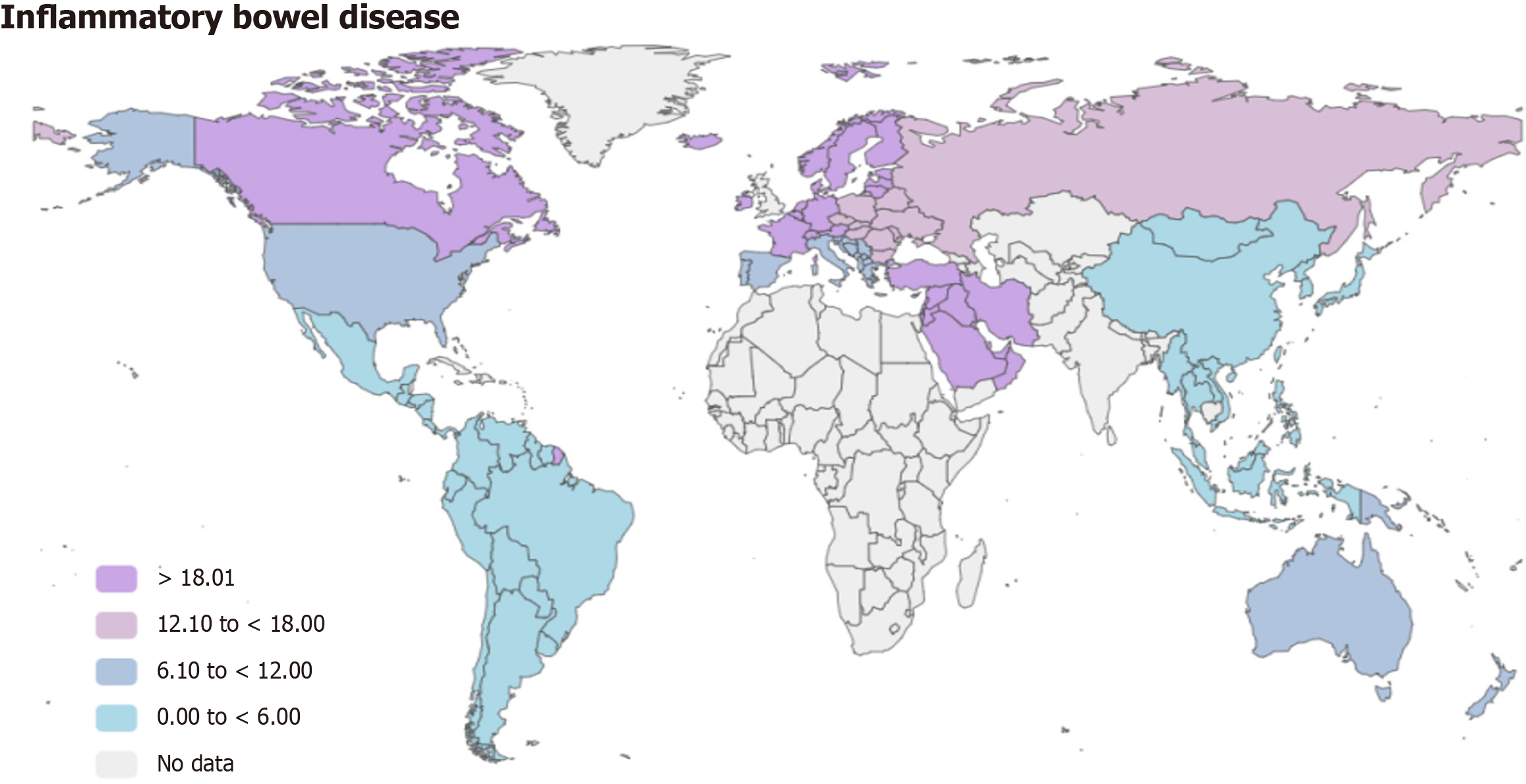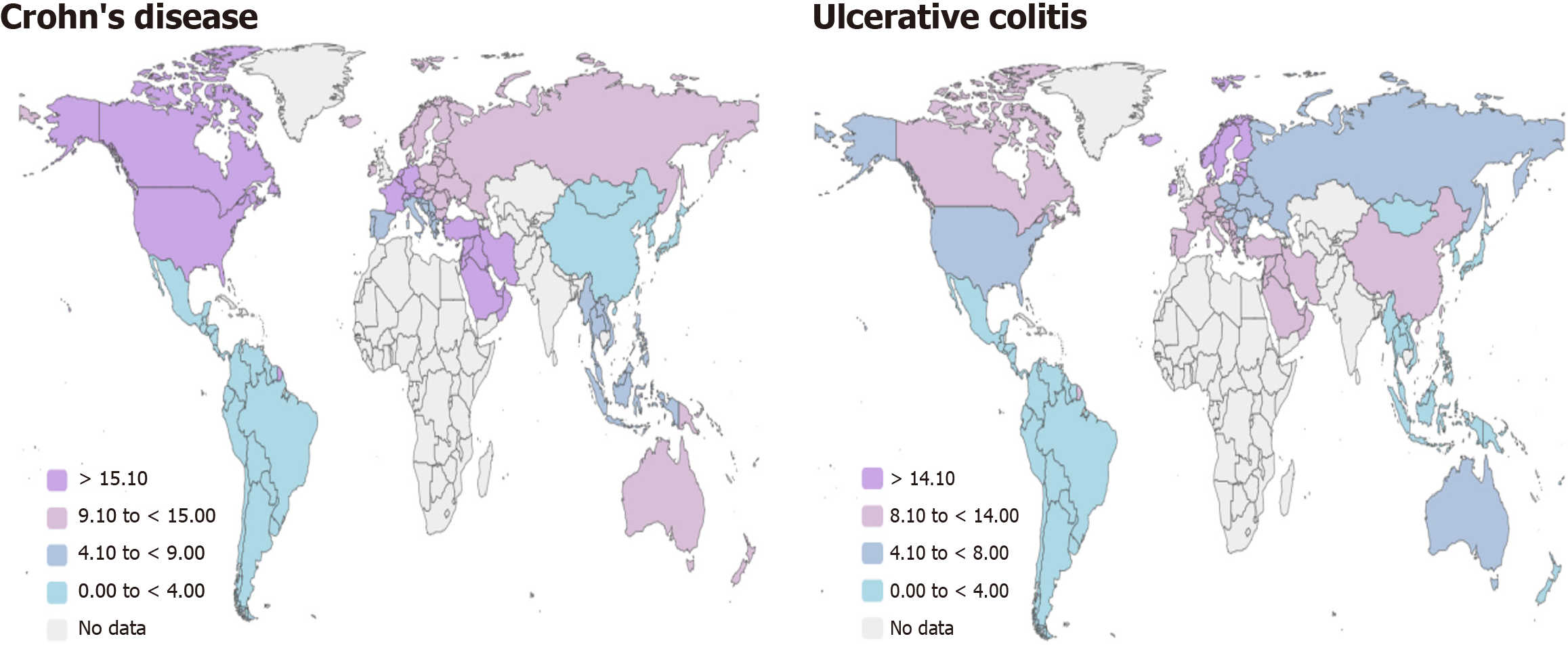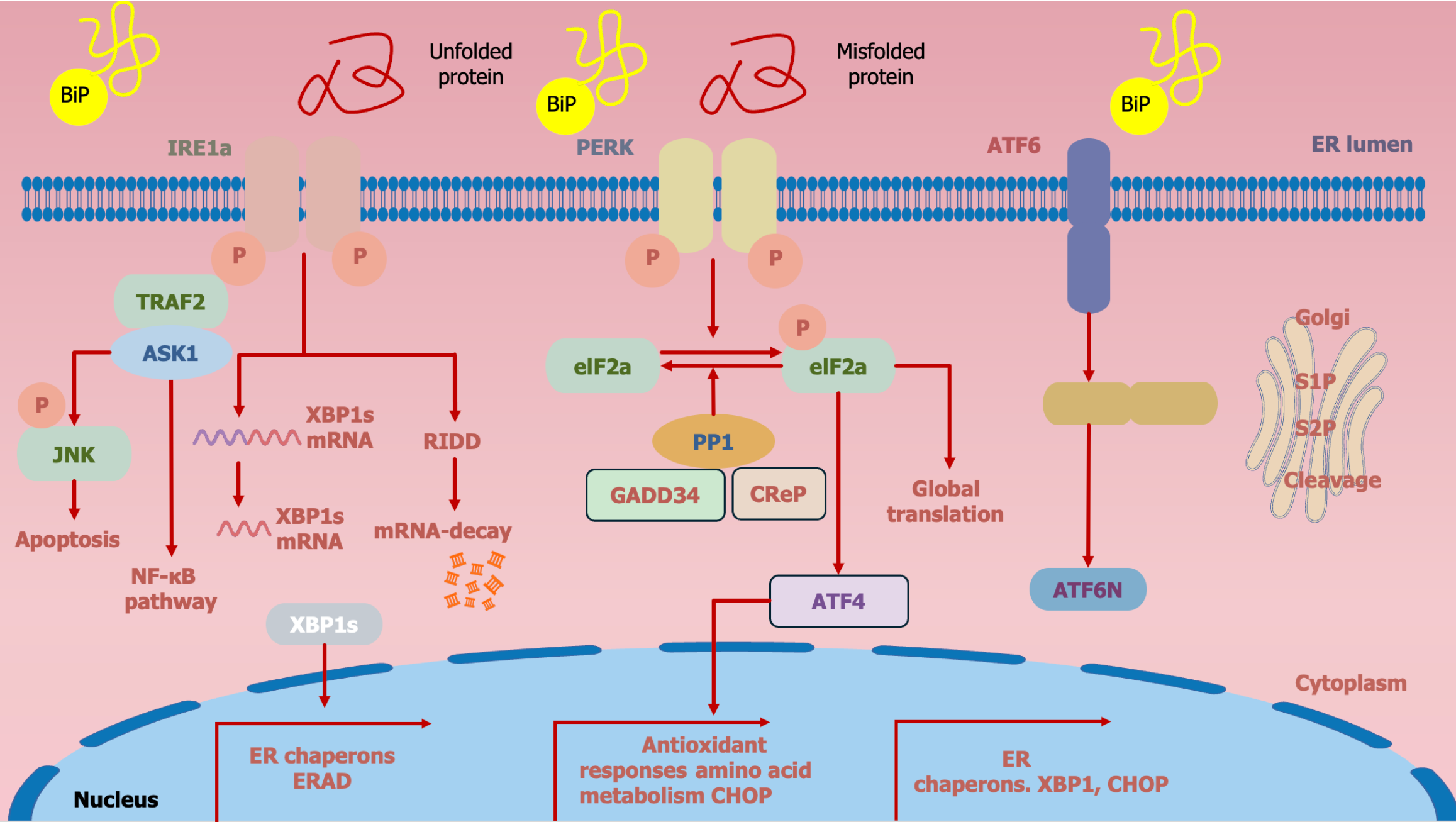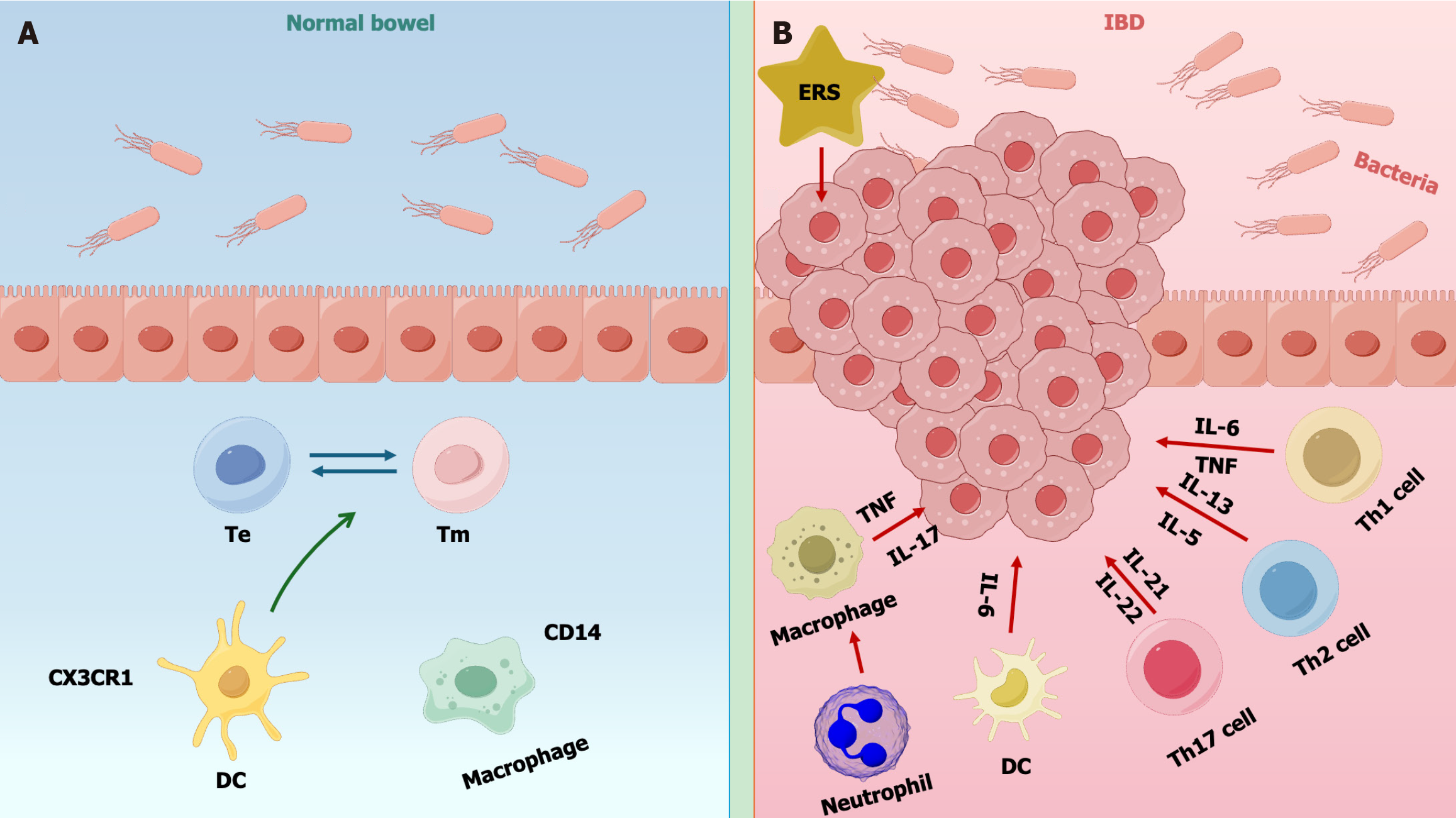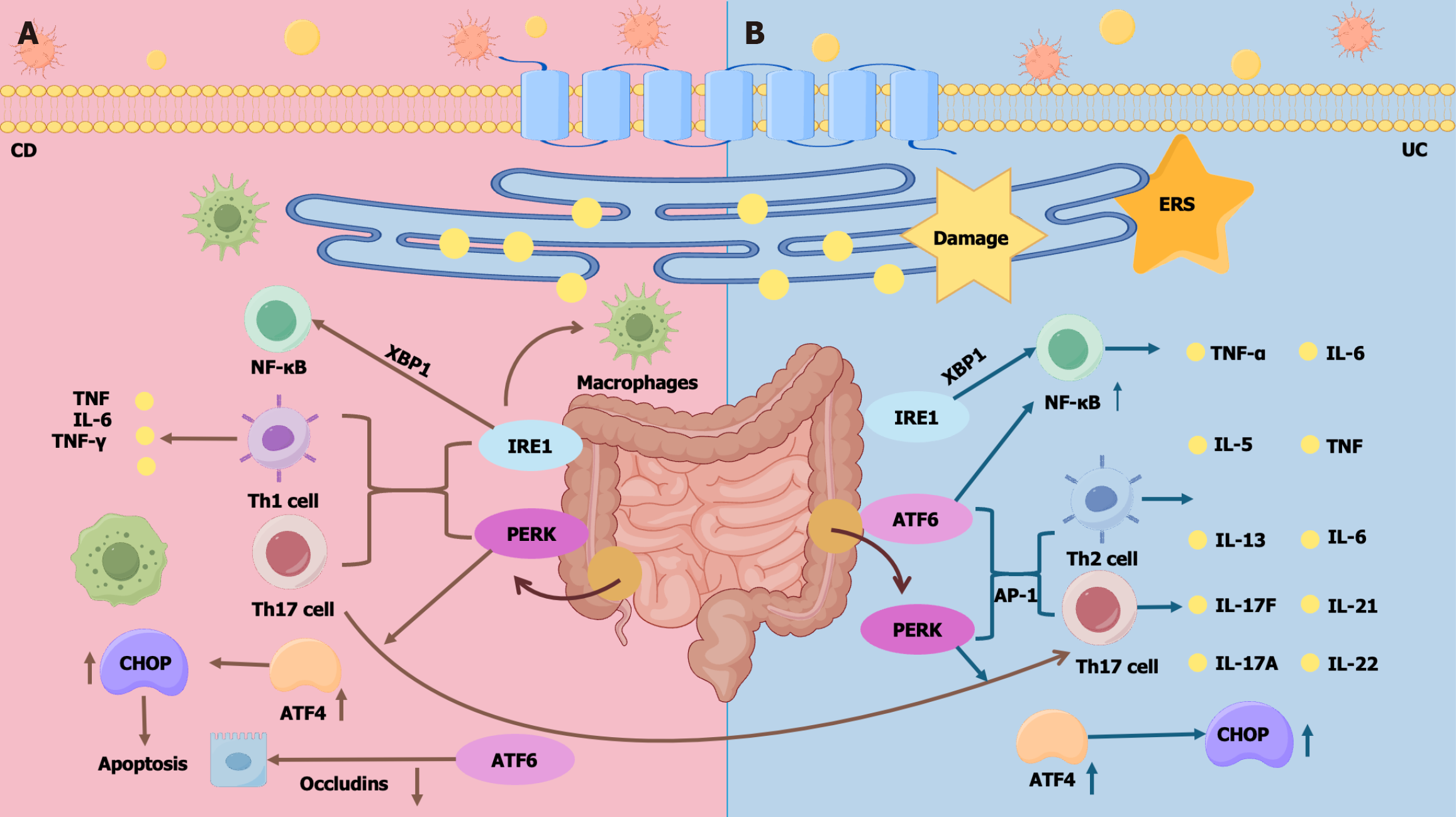Copyright
©The Author(s) 2025.
World J Gastroenterol. Apr 7, 2025; 31(13): 104671
Published online Apr 7, 2025. doi: 10.3748/wjg.v31.i13.104671
Published online Apr 7, 2025. doi: 10.3748/wjg.v31.i13.104671
Figure 1 Incidence of inflammatory bowel disease per 100000 person-years.
The incidence of inflammatory bowel disease varies markedly across the globe with annual incidence rates of approximately 27 per 100000 in Northern Europe; a total of 20 per 100000 in the United Kingdom; a total of 19 per 100000 in the United States; the incidence rate in Asia is about 3 per 100000 people; in Latin American countries such as Brazil and Argentina, the annual incidence rate is roughly 5 per 100000 people.
Figure 2 Incidence of Crohn’s disease and ulcerative colitis per 100000 person-years.
The greatest incidence of Crohn’s disease occurs in North America, approximately 21 per 100000, followed by Europe at approximately 16 per 100000, Australia at about 14 per 100000, Asia at roughly 4 per 100000, South America at around 2 per 100000; the highest yearly incidence of ulcerative colitis occurs in several European locations roughly 24 per 100000, followed by North America at 14 per 100000, in China, the annual incidence of ulcerative colitis is roughly 11 per 100000, while in Australia, it is about 8 per 100000.
Figure 3 Unfolded protein response pathways in endoplasmic reticulum stress.
Endoplasmic reticulum stress is triggered when protein folding in the endoplasmic reticulum goes awry and unfolded or misfolded proteins aggregate abnormally in the endoplasmic reticulum, followed by unfolded protein response to correct the situation, including inositol-requiring enzyme 1, protein kinase R-like endoplasmic reticulum kinase, and activating transcription factor 6. IRE1: Inositol-requiring enzyme 1; PERK: Protein kinase R-like endoplasmic reticulum kinase; ATF6: Activating transcription factor 6; ER: Endoplasmic reticulum; TRAF2: Tumor necrosis factor receptor associated factor 2; ASK1: Apoptosis signal-regulating kinase 1; JNK: c-Jun N-terminal kinase; XBP1: X-box binding protein 1; NF-κB: Nuclear factor kappa B; RIDD: Regulated inositol-requiring enzyme 1 alpha-dependent decay; ERAD: Endoplasmic reticulum-associated degradation.
Figure 4 Comparison of normal intestine and intestine of inflammatory bowel disease patients.
A and B: The predominant symptoms of inflammatory bowel disease include abdominal discomfort, diarrhea, and rectal bleeding; additional symptoms may encompass urgency to defecate, weight loss, anorexia, nausea, and anal pain, which, although manageable, exhibit a high recurrence rate. Te: Effector T cell; Tm: Memory T cell; DC: Dendritic cell; ERS: Endoplasmic reticulum stress; IBD: Inflammatory bowel disease; TNF: Tumor necrosis factor; IL: Interleukin; Th1: T helper cell 1; Th2: T helper cell 2; Th17: T helper cell 17.
Figure 5 Comparison of ulcerative colitis and Crohn’s disease in three pathways.
A: Crohn’s disease can happen anywhere, from the mouth to the anal area, and it can affect the plasma membrane layer, it can also cause the intestinal wall to thicken, strictures to form, and fistulas to form; B: Crohn’s disease may exhibit dysfunction in the regulation of T- and B-cells, which has been associated with immune cell functional abnormalities due to endoplasmic reticulum stress. CD: Crohn’s disease; UC: Ulcerative colitis; ERS: Endoplasmic reticulum stress; TNF: Tumor necrosis factor; IL: Interleukin; NF-κB: Nuclear factor kappa B; XBP1: X-box binding protein 1; IRE1: Inositol-requiring enzyme 1; PERK: Protein kinase RNA-like endoplasmic reticulum kinase; Th1: T helper cell 1; ATF6: Activating transcription factor 6; ATF4: Activating transcription factor 4.
- Citation: Zheng T, Huang KY, Tang XD, Wang FY, Lv L. Endoplasmic reticulum stress in gut inflammation: Implications for ulcerative colitis and Crohn’s disease. World J Gastroenterol 2025; 31(13): 104671
- URL: https://www.wjgnet.com/1007-9327/full/v31/i13/104671.htm
- DOI: https://dx.doi.org/10.3748/wjg.v31.i13.104671









